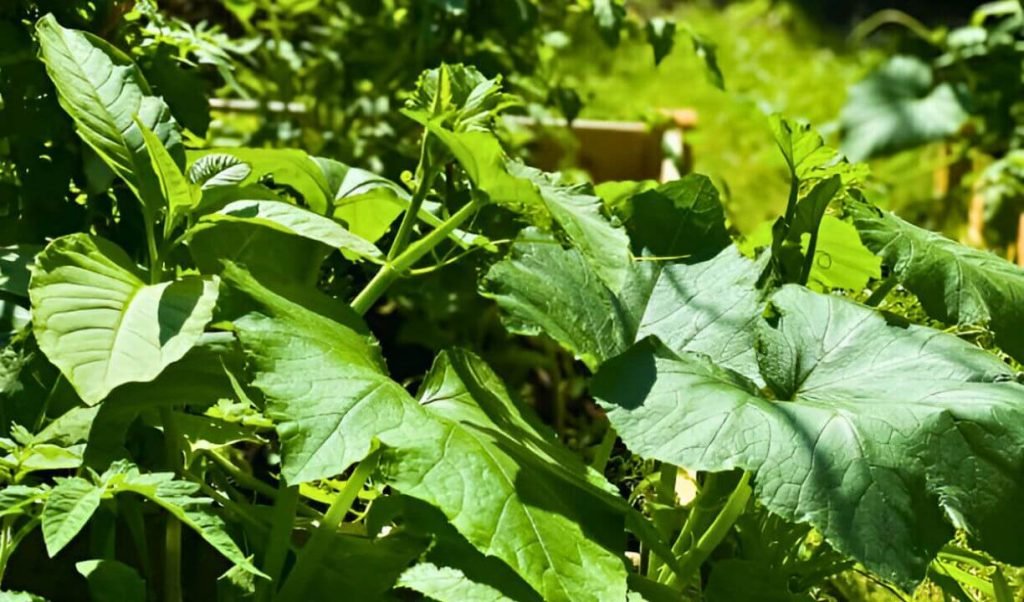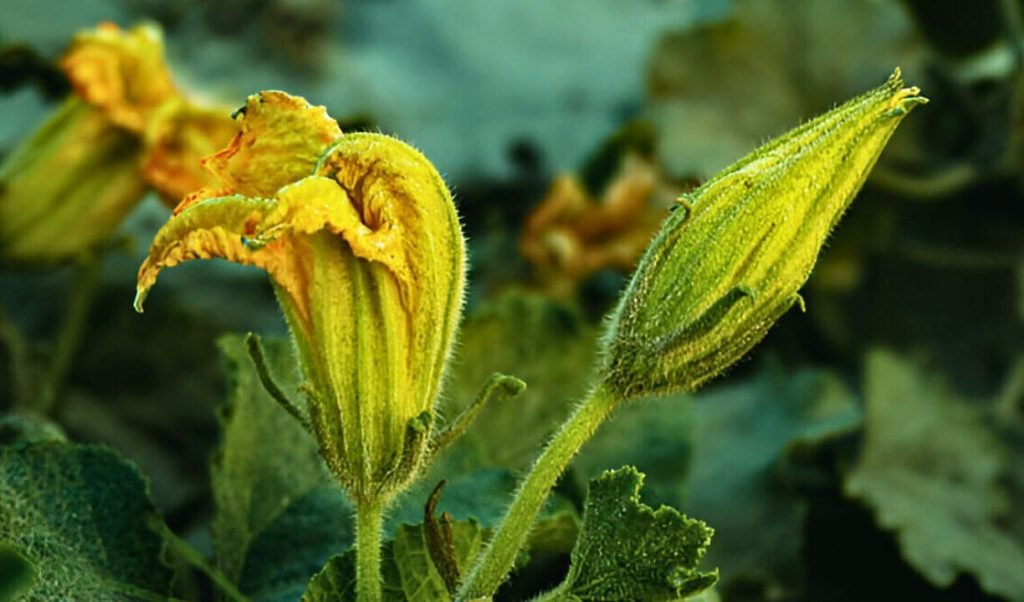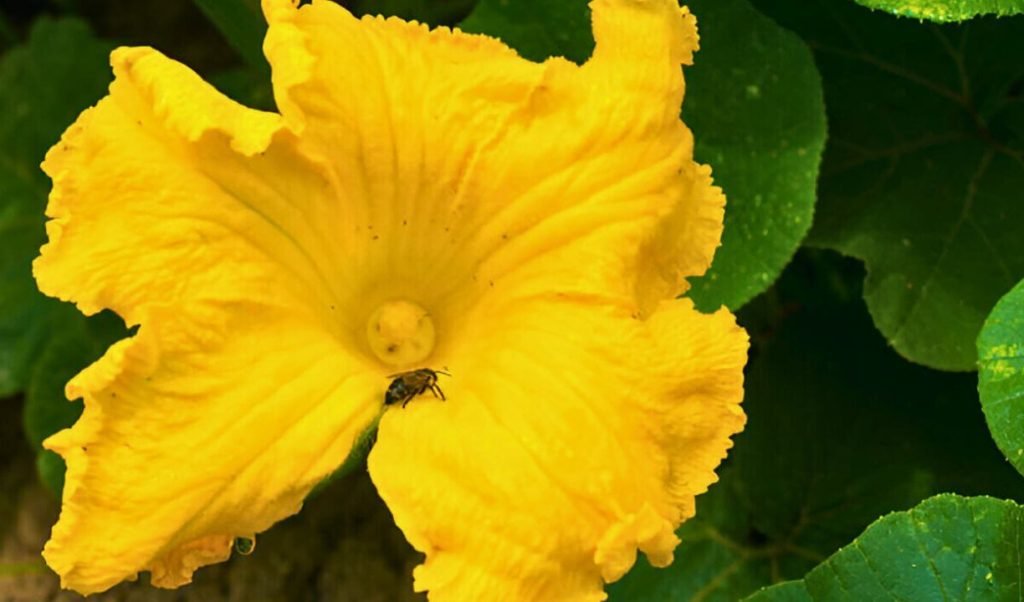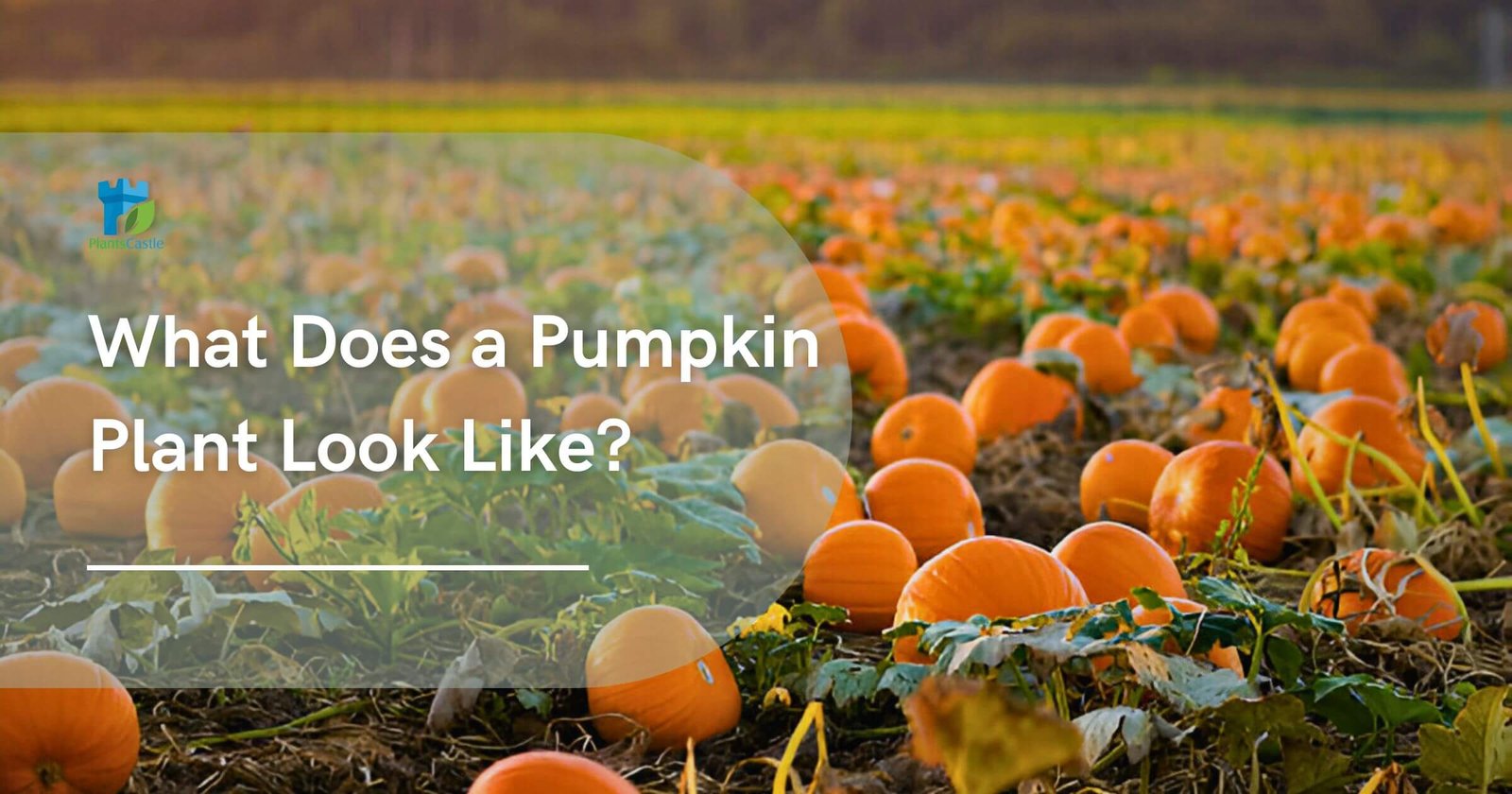A lot of people like pumpkins. They are not only great for Halloween and Holiday decorations, but they are also great for establishing a variety of initiatives at home. Pumpkins are also delicious food and make lovely décor.
If you’re considering growing your pumpkins, understanding what a pumpkin plant looks like and how it grows is crucial for success. The pumpkin plant is a member of the Cucurbitaceae family. These large, orange fruits are great for carving jack-o-lanterns but also make great pies, breads, and soups.
Growing pumpkins is simple if you start with healthy plants. Identifying a pumpkin plant’s leaves is essential for accurate identification and plant maintenance. In this article, we’ll explain what a pumpkin looks like.
What Does a Pumpkin Plant Look Like?
The expansive vine known as a pumpkin plant can reach 15 to 20 feet long and bears enormous, palmate- or lobed-shaped, green leaves. The leaves are an essential component of the plant since they assist in photosynthesis and offer shade for the fruit that is still forming. They are joined to the stem by long petioles.
Vining plants also have large yellow or orange flowers that cling to long stalks and attract pollinators. Depending on the cultivar, pumpkin fruit can weigh anywhere from a few pounds to more than 100 pounds. It often has a round to oblong form.
Physical Description of the Pumpkin Plant
Here is a physical description of the pumpkin plant:
Pumpkin Vines

The vines that produce pumpkins are the plant’s lifeblood. They can support heavy pumpkins since they are strong. They assist the vine’s expansion by climbing and latching onto objects with their tiny, coiled tendrils.
They continually seek new regions and resources to help the pumpkin plant’s growth, making them similar to daring explorers. From the moment they are tiny seeds until they are ready to be harvested, these vines and their cotyledons work hard to ensure the pumpkins have all they require to grow.
Pumpkin Leaves
Pumpkin leaves are large and rough, with many ridges and folds. They are also known as true leaves. They act as small solar panels for the plant, absorbing sunlight and converting it into food through photosynthesis. This procedure keeps the plant healthy and produces giant pumpkins.
The leaves work tirelessly all day, converting sunlight into energy the plant uses to produce sugars and other nutrients. Without these green leaves, the pumpkin plant would be unable to make the delectable fruits we enjoy carving and cooking with. So they’re like the pumpkin patch’s superheroes, quietly working to keep everything operating well.
Pumpkin Flowers
There are two kinds of blooms on pumpkin plants: boys and girls. Usually, the boy flowers appear first, followed by the girl blooms. The female blooms can be identified by their small protrusion at the base, which will eventually turn into a pumpkin. They appear to be preparing to grow the fruit before it even begins.
The magic happens in these blossoms, which is why they are vital! To produce seeds and increase the number of pumpkins we can eat, bees and other insects assist them by transporting pollen from the male blooms to the female flowers.
Growth Stages of the Pumpkin Plant
Your pumpkin seeds will go through numerous stages of growth before they are ready to be harvested, so cultivate them. Here’s what to expect:
1. Seed Germination

Planting your pumpkin seeds marks the beginning of this phase. The time it takes for the seeds to sprout young plants might range from three to ten days. Make sure you plant pumpkins during a season when the soil temperature is appropriate. It’s a good idea to grow your pumpkin patch once the risk of frost has passed.
In milder climates, particularly in North America, this is usually around late May, early June, or late Spring. Another great choice is to plant pumpkins on raised beds. Since this is a warm-weather crop, this is the most effective method of controlling temperature and soil moisture.
2. Seedling Growth
The pumpkin seedlings will sprout once the seeds have taken root. This stage may extend to a duration of two to four weeks. Numerous elements influence the growth of seedlings. For every stage of pumpkin growth, you need plenty of space, moist soil, and excellent air circulation. A sizable main vine will grow from your pumpkin sprouts. This will give rise to the first real leaves and flowers.
3. Vegetative Growth
This is the stage at which pumpkin plants form vines and leaves. The vegetative period can take two to eight weeks to grow exceptionally long vines.
Plant your seed packet in a sunny location with enough room for the extensive root systems. Your first real leaves will have jagged edges and a green color, giving them the traditional pumpkin plant appearance.
4. Pumpkin Flowers

The pumpkin plants will bloom with yellow blossoms at this phase. Eventually, the female pumpkin blooms will mature into pumpkins. One to four weeks can pass during the blossoming phase.
The female bloom will have a little protrusion at its base. On female blooms, the pumpkin fruit develops in this area near the base of the bloom. Male flowers grow at the base of the flower on slender stems. They begin as little bulbs as well.
Reproduction of the Pumpkin Plant
The reproduction of the pumpkin plant is given below:
Fruit Production
The last stage is when the pumpkins begin to grow on the vines. The time frame for fruit growth might range from two to four weeks. Tiny, green baby pumpkins will start to appear. Despite the need for manual pollination, this fruit set stage begins as soon as fertilization.
Before developing into a tiny pumpkin, these small green fruits will resemble green balls. Once little pumpkins turn bright yellow to bright orange, many plants are ready for harvesting; nevertheless, they may grow larger if given suitable, healthy soil.
Pollination Process

Pollination is similar to a unique delivery service for pumpkins. It’s critical because it helps plants produce fruit. Here it works: pollen, which resembles tiny plant dust, travels from boy to girl flowers. Bees are nature’s delivery workers, transporting pollen around.
However, if there aren’t enough bees, people must assist by spreading pollen themselves. This guarantees the girl flowers have everything they need to develop into pumpkins. Pollination, whether by bees or humans, is essential to pumpkin production.
FAQs
1. What does a pumpkin plant look like when it first starts?
The seedling’s first leaves develop as tiny oval-shaped leaves that resemble bean sprouts. These are embryonic leaves, which will provide nutrition to the developing plant. The seedling’s tiny leaves will grow and eventually evolve into real leaves.
2. What does a pumpkin plant leaf look like?
Large, lobed leaves that grow on hollow stalks are called pumpkin leaves. They have a rounded shape and frequently have sharp edges. They have three veins or more.
3. What is the life cycle of a pumpkin?
The life cycle of a pumpkin begins with a seed and ends with a vine, flower, pumpkin, and seed again.
4. Can I eat pumpkin leaves raw?
Yes, as pumpkin leaves are a tasty delicacy, they can be eaten.
5. Is pumpkin all year round?
Pumpkins are harvested in the autumn after being grown in early May through June. Winter squash, such as pumpkins, have orange skin that is smooth and slightly ribbed.
Conclusion
In conclusion, Now you’ll know what pumpkin plants look like and how they grow. You can harvest your pumpkins (Cucurbita pepo) right from the vine. With the right amount of time, lots of sun, and a little love, you can grow any pumpkin, whether you want to cultivate multiple tiny ones or one enormous one. Whatever type of pumpkin you choose to plant, give it enough time and room to grow to its full potential. If you are new to pumpkins, you can plant a smaller variety this year and a more significant type the following year.

